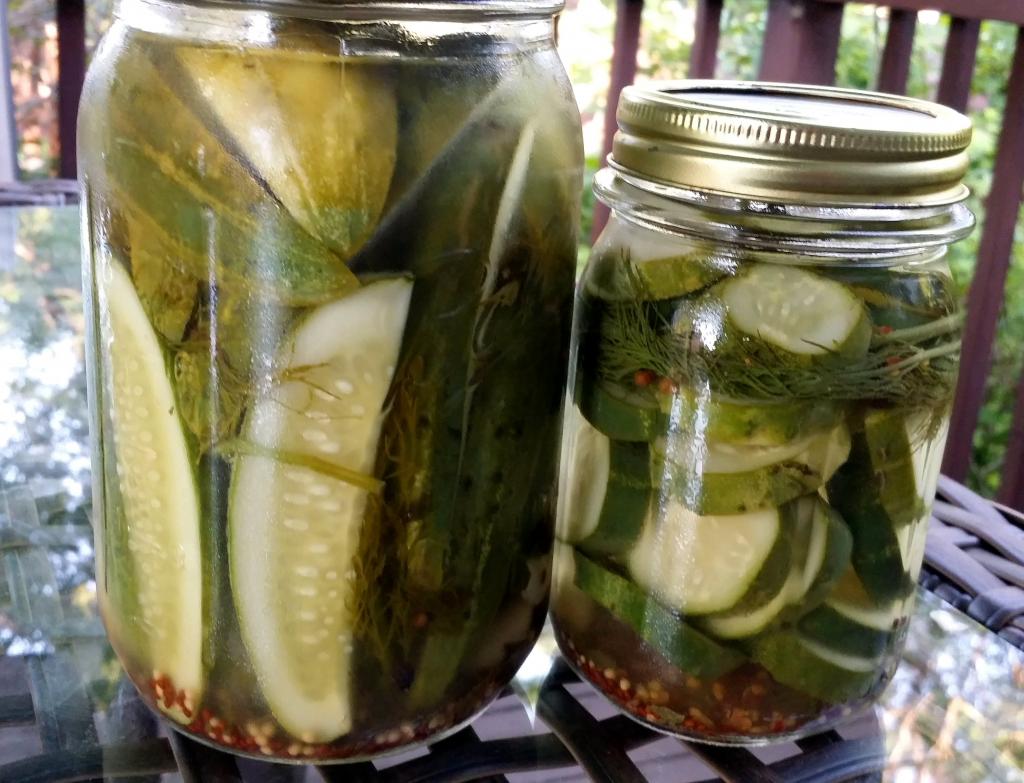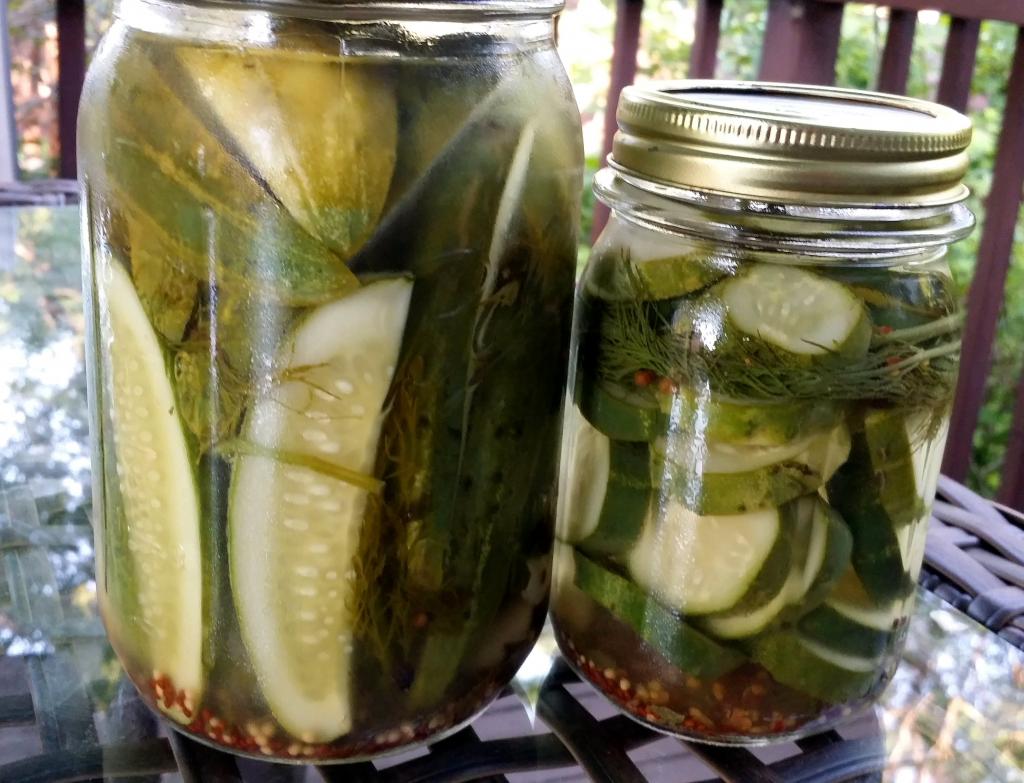Steve Kroll
Wine Guy
My grandma Olson was an avid canner. I remember a heavy wooden shelf in her cellar always being loaded with dozens and dozens of jars of preserved vegetables, pickles, and jams/jellies.
Her pickles were, without a doubt, my favorites.
My grandmother's philosophy on pickles was that you did water bath canning in the fall, and ate those during the winter months. Summer, however, was the time to make refrigerator pickles. Those are the ones I really liked. Unlike the canned pickles, which were essentially cooked in a water bath to preserve them, the summer pickles were raw and had a much fresher taste and crunchier texture.
Refrigerator pickles are ridiculously easy to make, and so tasty that they don't tend to hang around for very long. I make some every couple weeks, usually on Saturday mornings after I get back from the farmer's market. I also like to make them in small batches of a few pints at a time. Remember, they are not built for the long term, although they will certainly last for a while if you need them to. With winter canning, my brine is usually a 1:1 ratio of water to vinegar. For summer pickles, I go a bit lighter on the vinegar. I also use about half the salt. So if you're sodium conscious, this is a pretty good recipe.
Feel free to alter the recipe below as you see fit. You don't have to use cucumbers, but note that some vegetables might require blanching for a few minutes in boiling water to soften them. The rule of thumb I use is that if you normally would eat the vegetable raw, then you can pickle it raw. For example, cukes, carrots, radishes, kohlrabi slices. Vegetables that usually require blanching are pearl onions, asparagus, and green beans.
Quick & Easy Refrigerator Pickles
Makes 3 pints
Basic Brine:
Spices, for each pint of pickles use:

Her pickles were, without a doubt, my favorites.
My grandmother's philosophy on pickles was that you did water bath canning in the fall, and ate those during the winter months. Summer, however, was the time to make refrigerator pickles. Those are the ones I really liked. Unlike the canned pickles, which were essentially cooked in a water bath to preserve them, the summer pickles were raw and had a much fresher taste and crunchier texture.
Refrigerator pickles are ridiculously easy to make, and so tasty that they don't tend to hang around for very long. I make some every couple weeks, usually on Saturday mornings after I get back from the farmer's market. I also like to make them in small batches of a few pints at a time. Remember, they are not built for the long term, although they will certainly last for a while if you need them to. With winter canning, my brine is usually a 1:1 ratio of water to vinegar. For summer pickles, I go a bit lighter on the vinegar. I also use about half the salt. So if you're sodium conscious, this is a pretty good recipe.
Feel free to alter the recipe below as you see fit. You don't have to use cucumbers, but note that some vegetables might require blanching for a few minutes in boiling water to soften them. The rule of thumb I use is that if you normally would eat the vegetable raw, then you can pickle it raw. For example, cukes, carrots, radishes, kohlrabi slices. Vegetables that usually require blanching are pearl onions, asparagus, and green beans.
Quick & Easy Refrigerator Pickles
Makes 3 pints
Basic Brine:
- 2.5 cups water
- 1.5 cups of your favorite vinegar (must be at least 5% acidity)
- 1 tbsp canning salt
Spices, for each pint of pickles use:
- 1 tsp pickling spice (recommend Penzeys)
- 2 4-inch fronds of fresh dill
- 1 large clove garlic, sliced lengthwise
- 1/4 tsp red pepper flakes, or one small dried red chile, such as a pequin
- For a stronger dill flavor, I'll also usually add an additional teaspoon of dill seed
- 10-12 small cucumbers, cleaned well and sliced as desired.
- In a large saucepan, combine the brine ingredients and bring to a boil. Turn off heat and prepare your vegetables.
- In each [scrupulously clean] pint jar, add the spices/flavorings as indicated. Double for quart jars.
- Tightly pack as many veggies as you can into each jar. Pour the hot brine into the jars until it is within a half inch of the top. If you have any veggie "floaters," wedge them between other pieces, so they are fully submerged. Lightly screw on the lids and let the jars sit on the counter top until cool enough to handle.
- Put the jars in the fridge and leave to cure for 3-5 days before eating.
- Use within six weeks. If you plan to keep pickles longer, use a 1:1 water vinegar ratio and double the salt.

Last edited:



